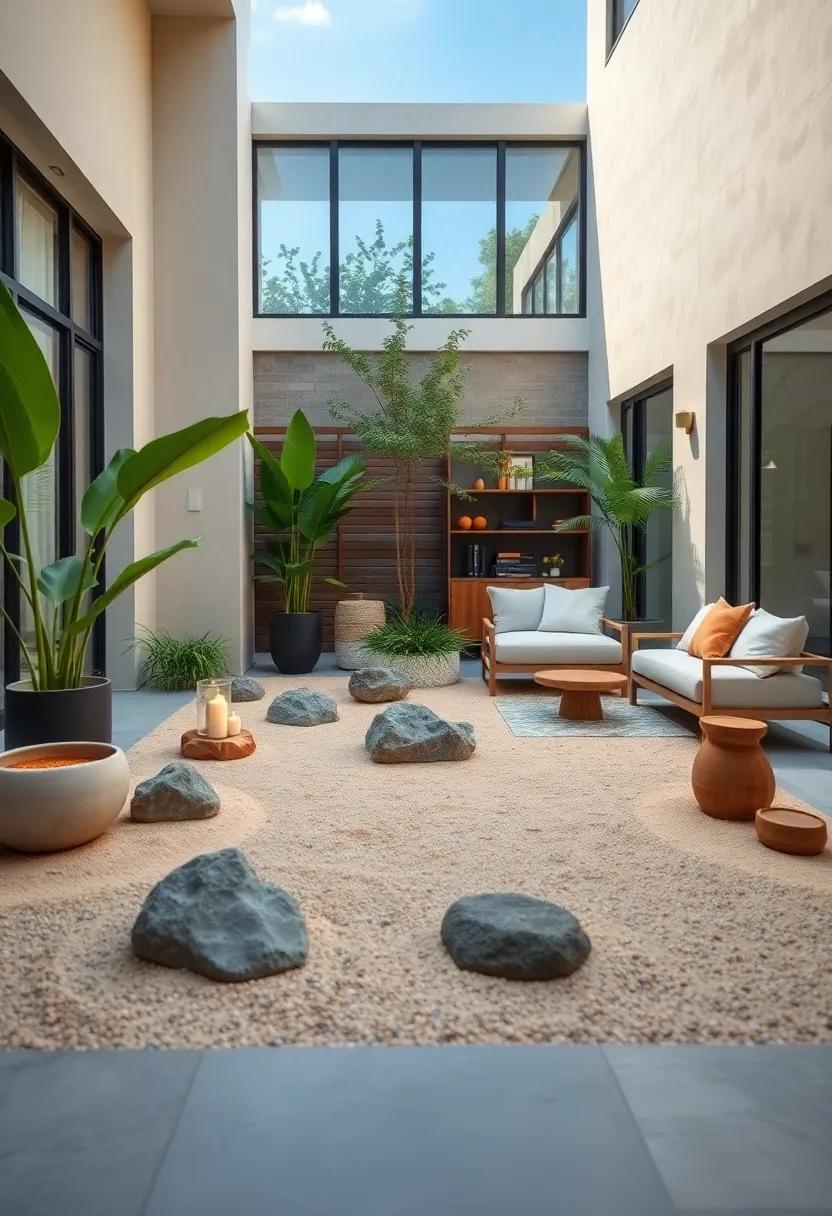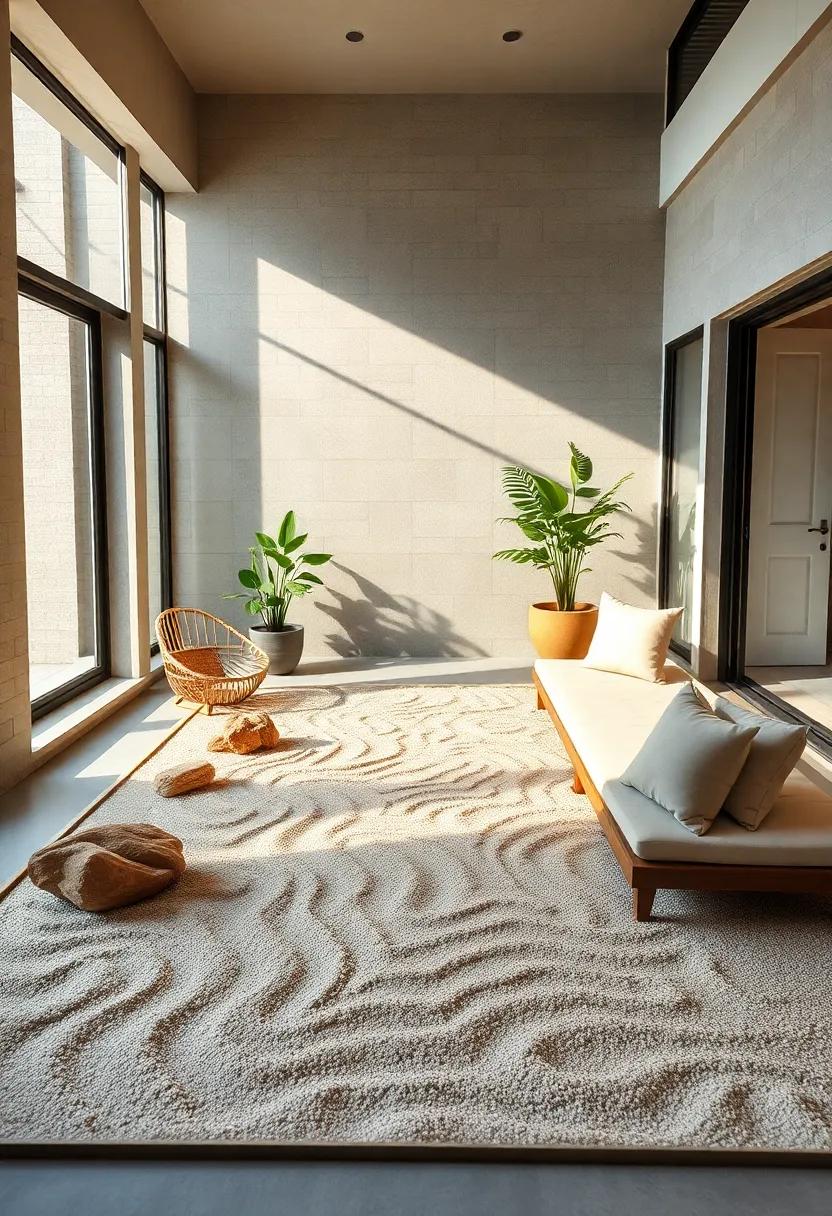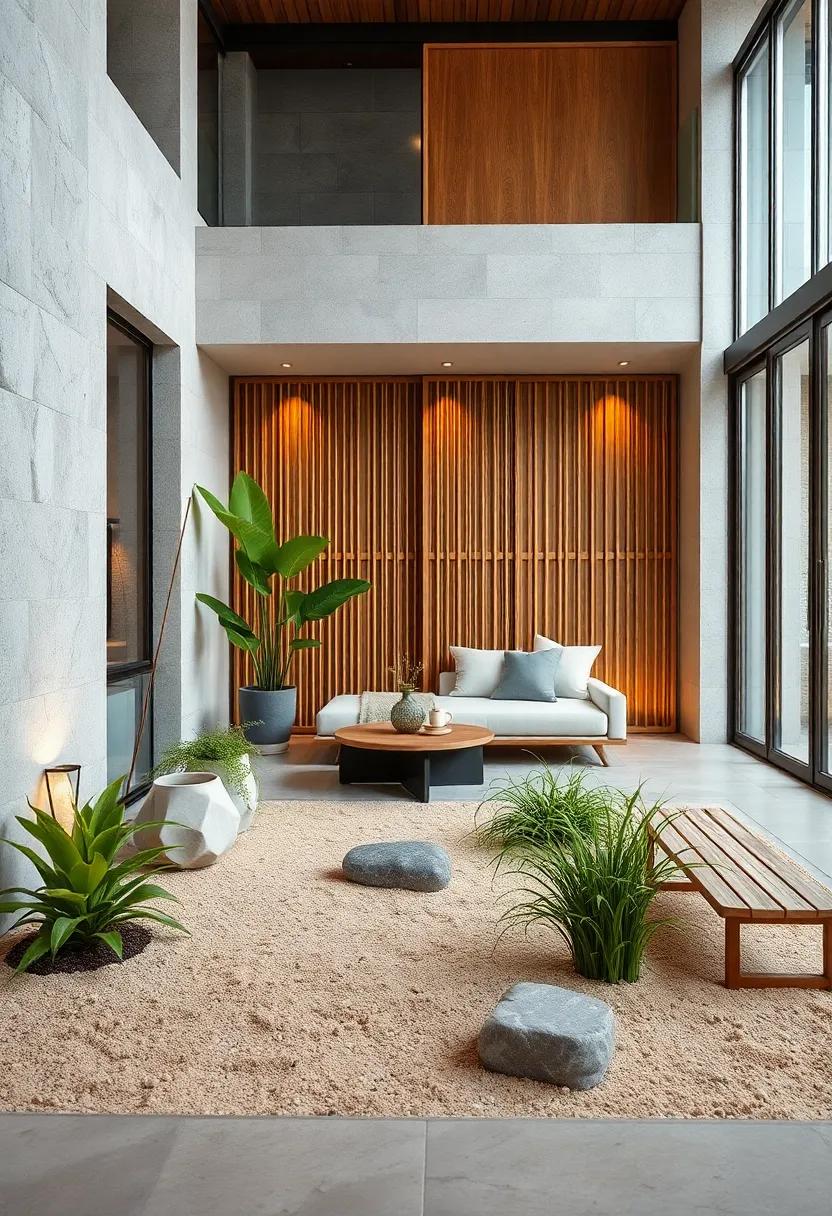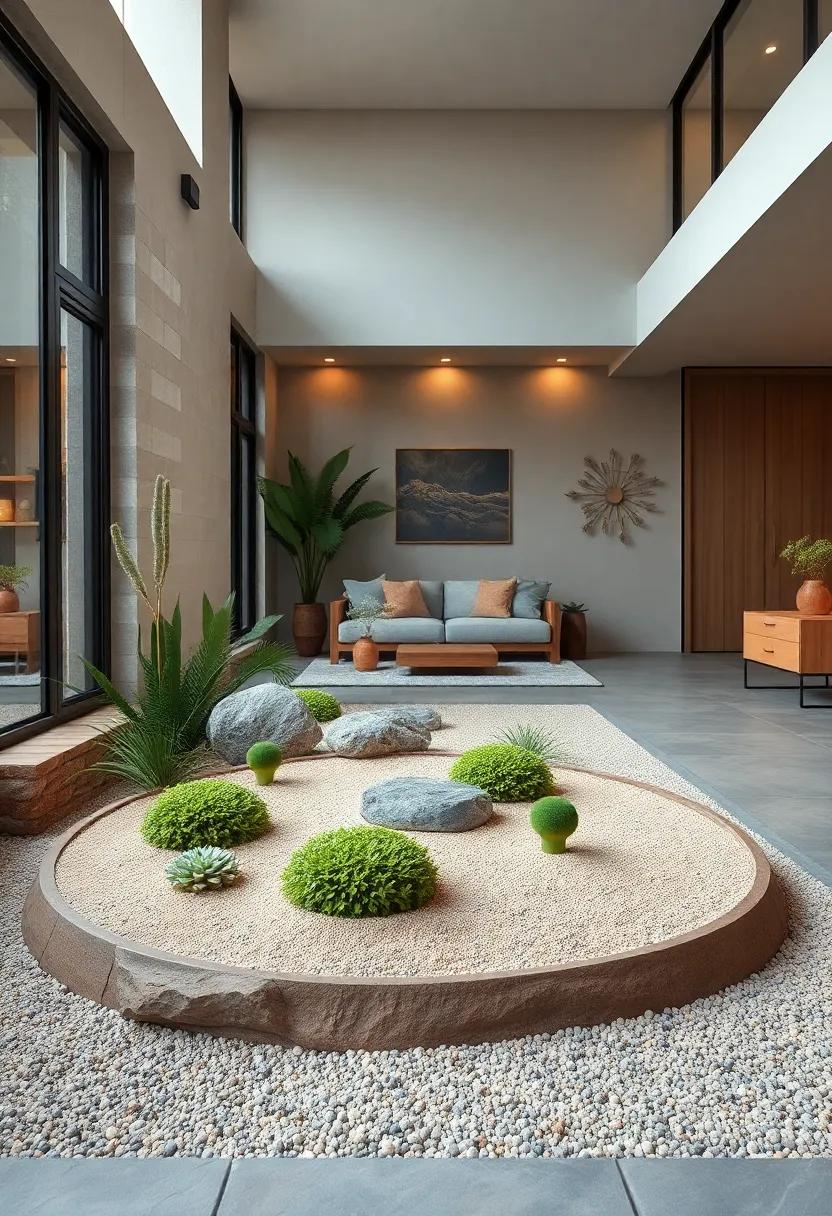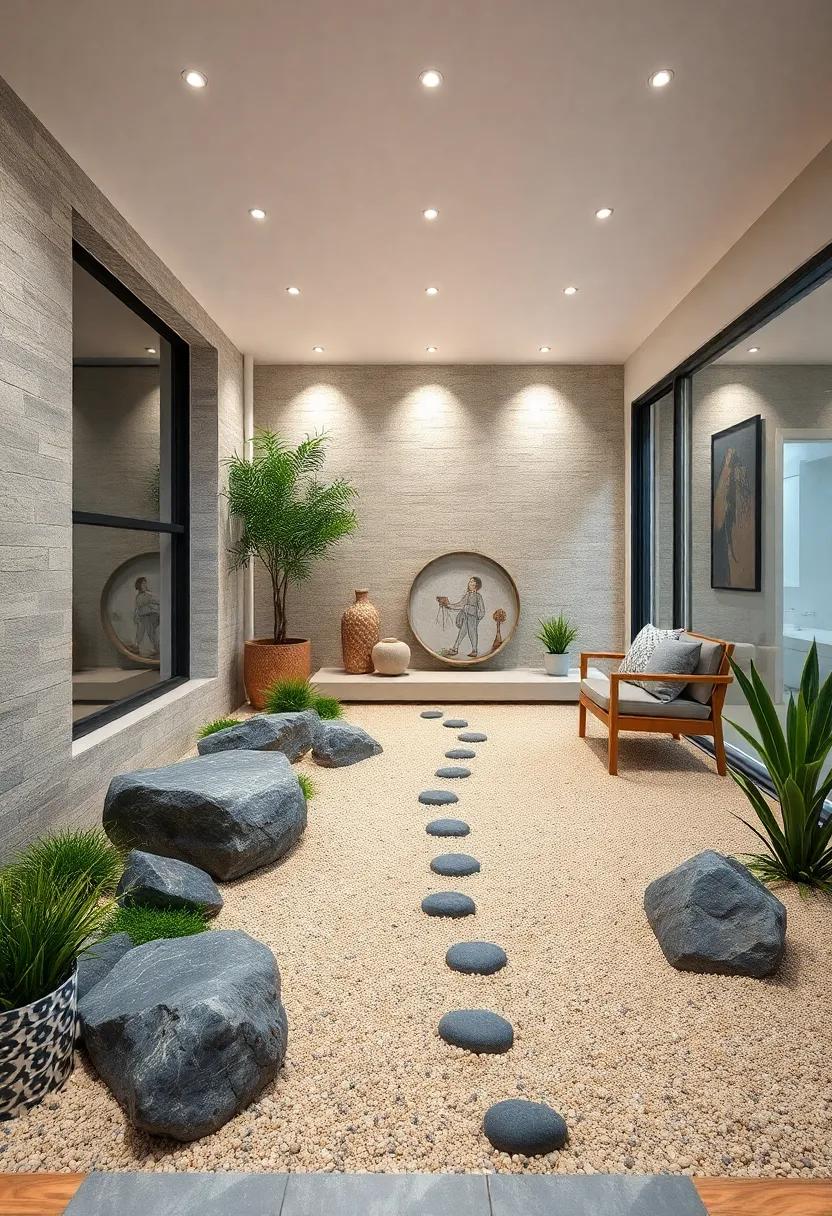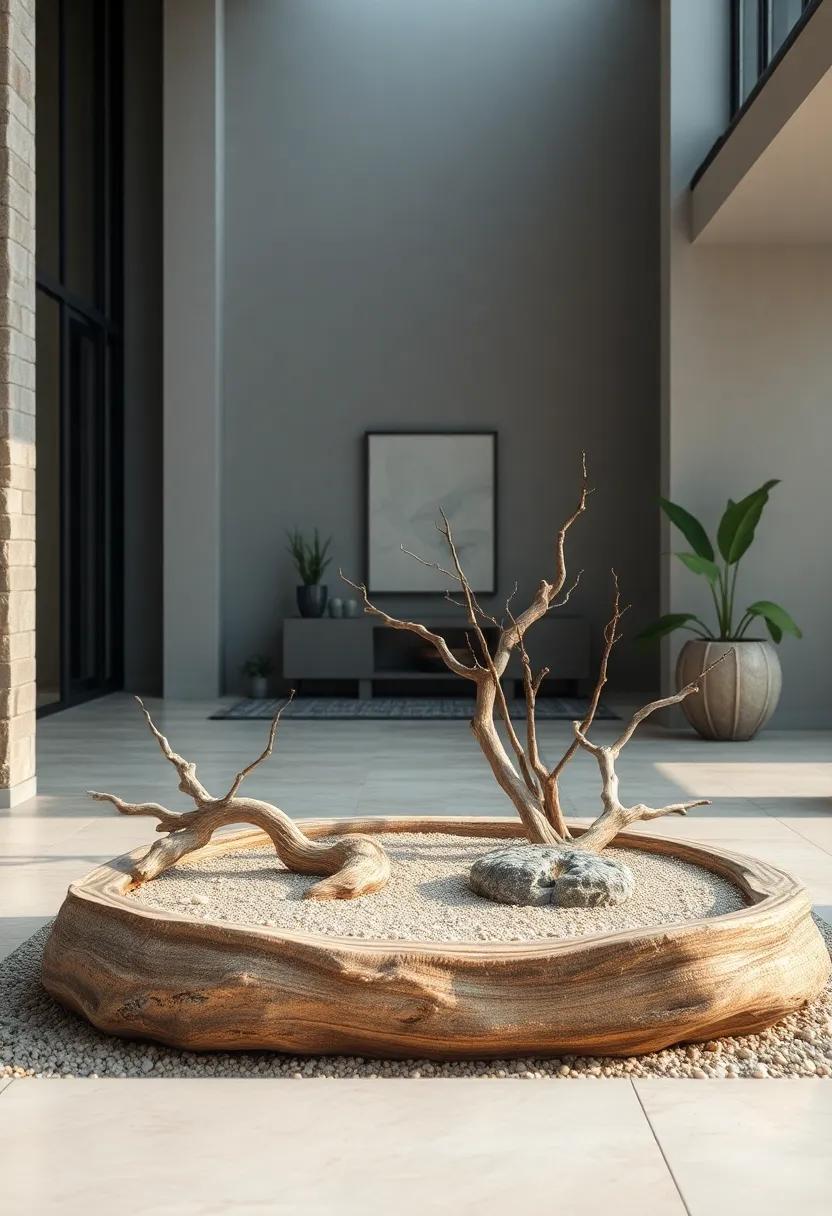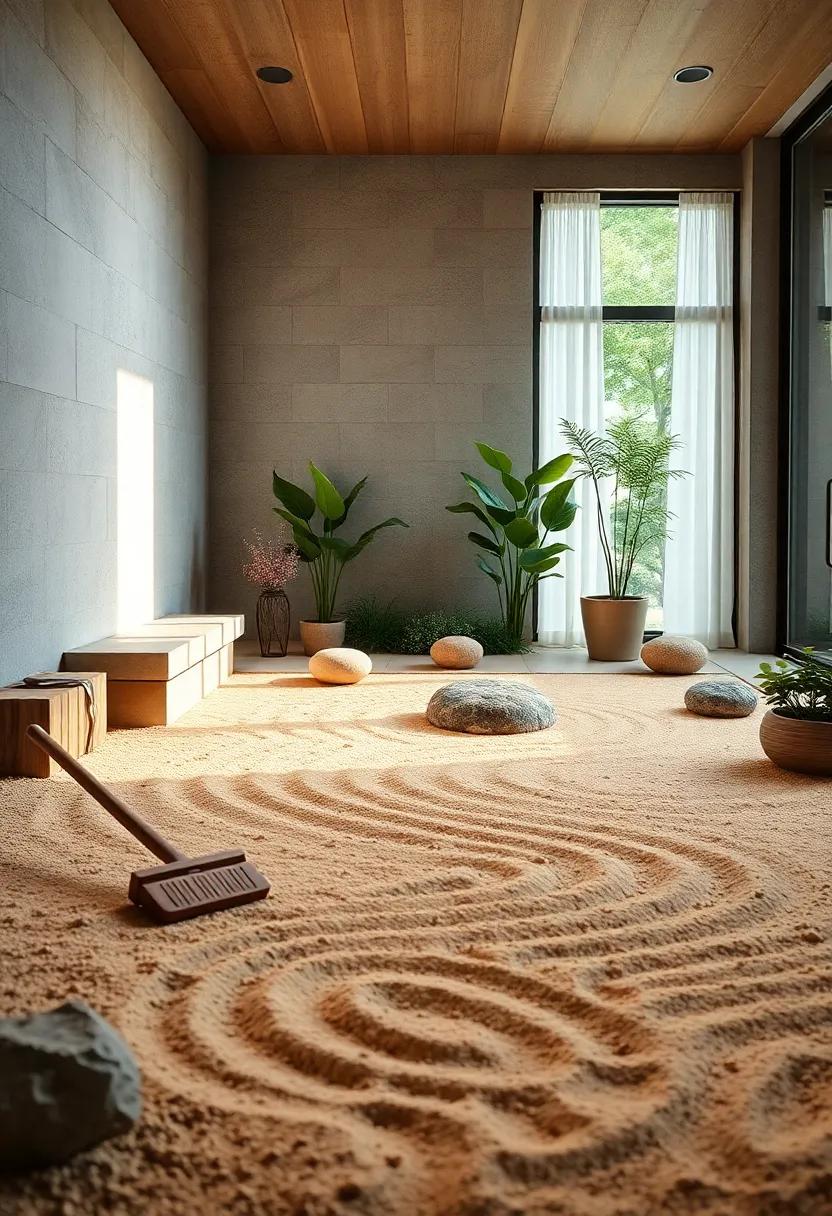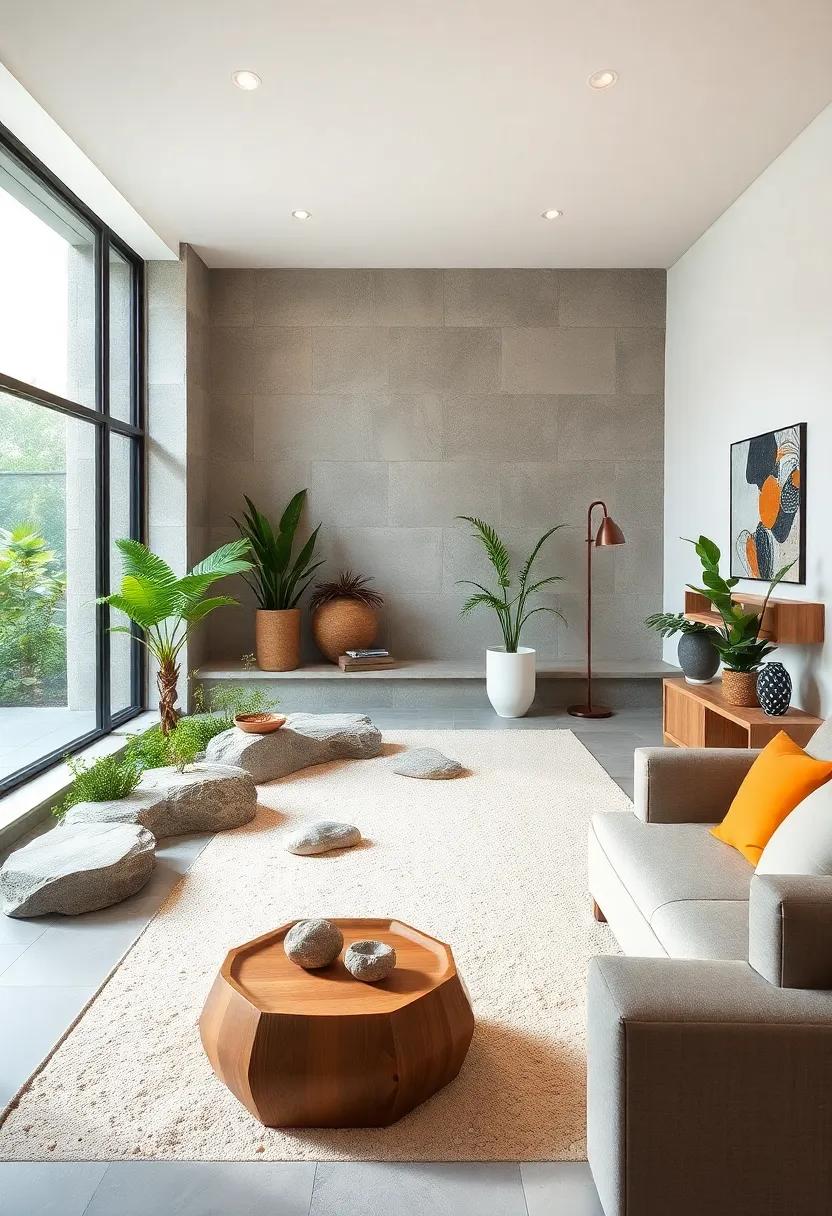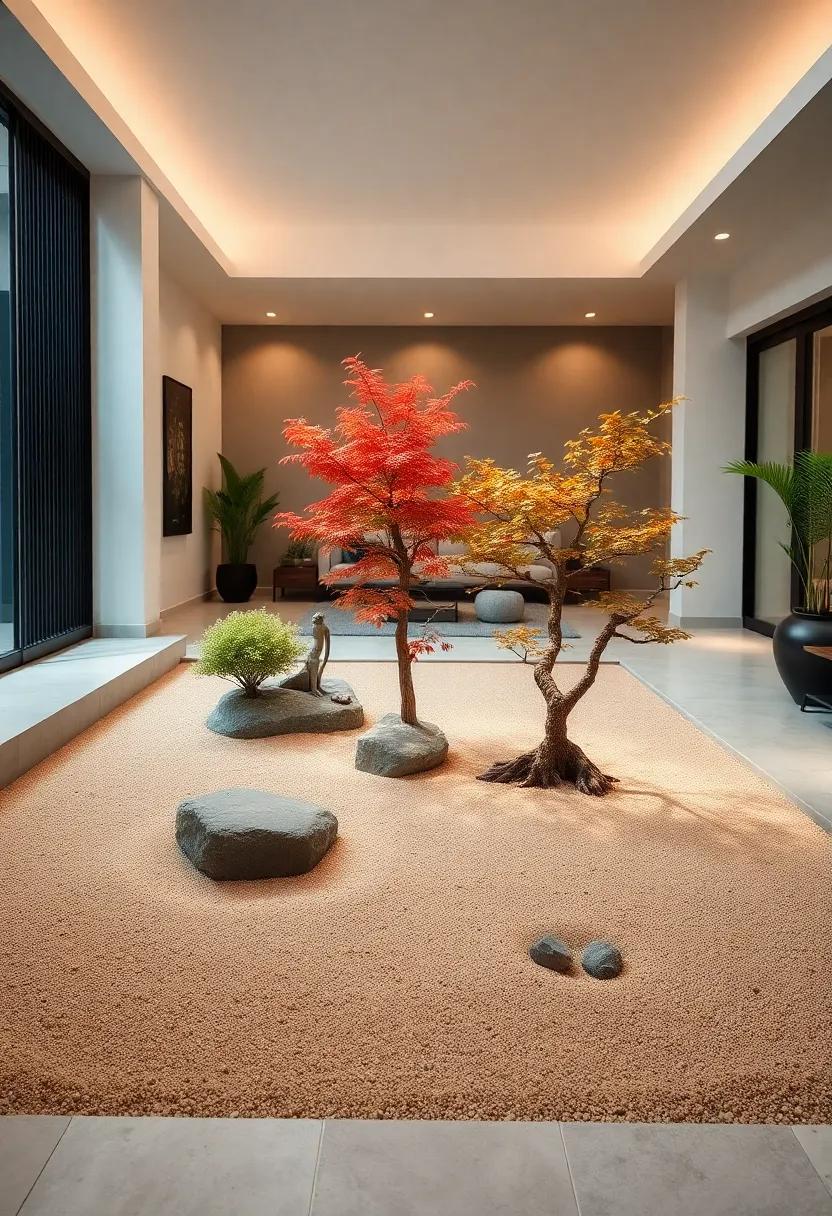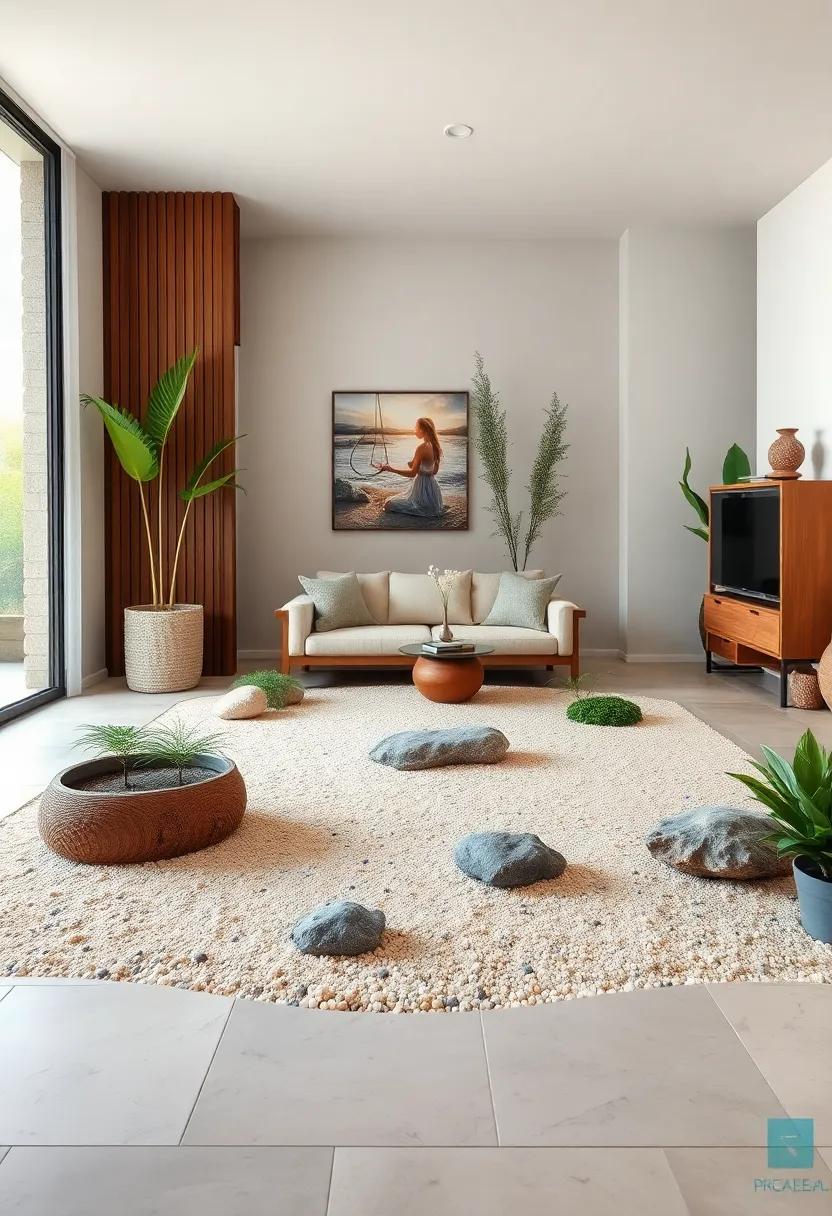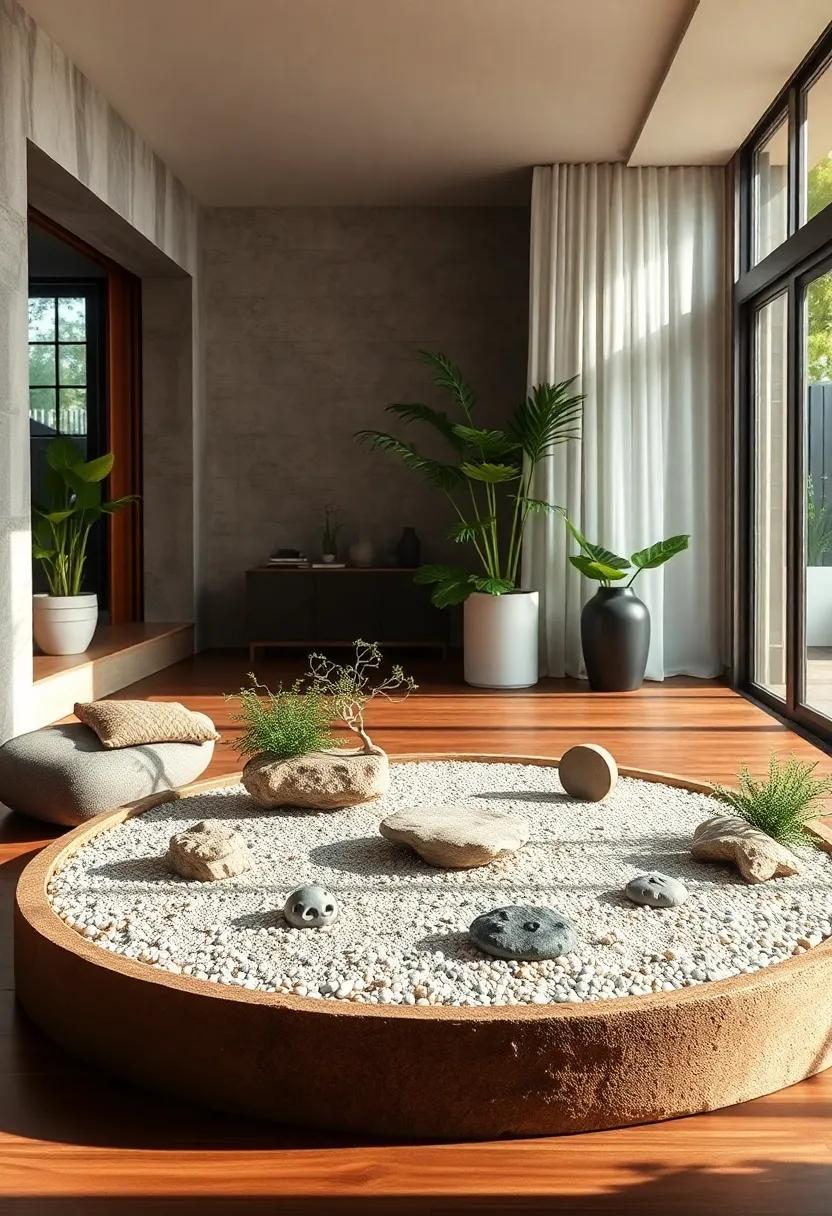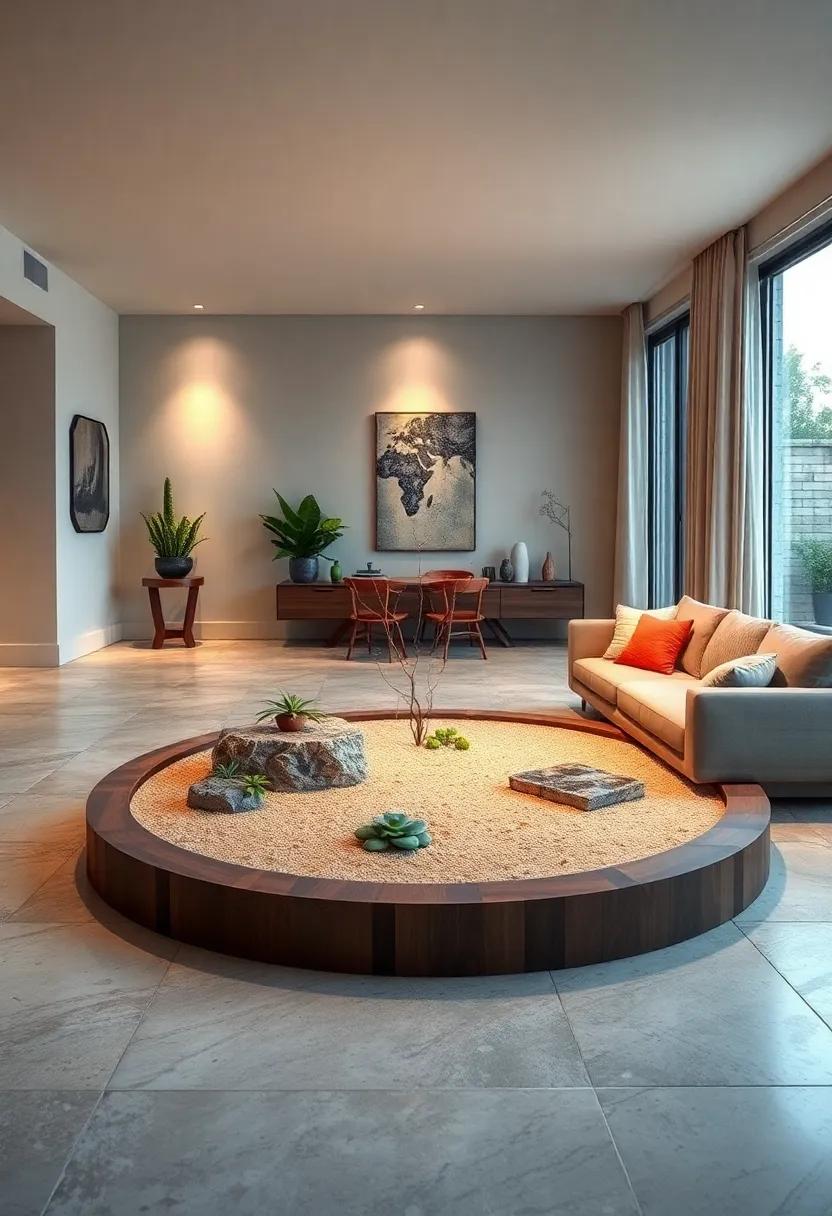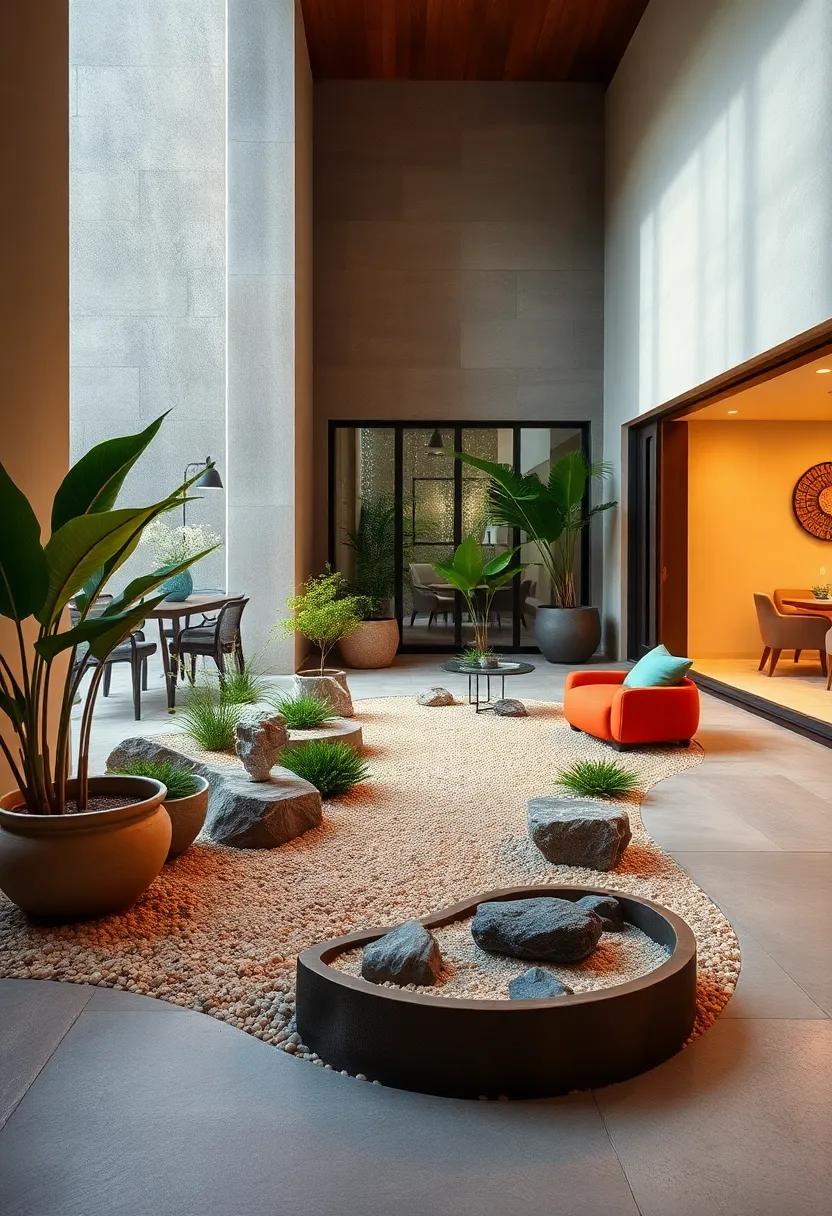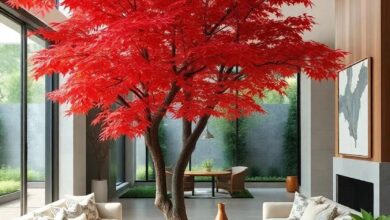Creating Tranquility: How to Design a Front Yard Mini Zen Sand Garden
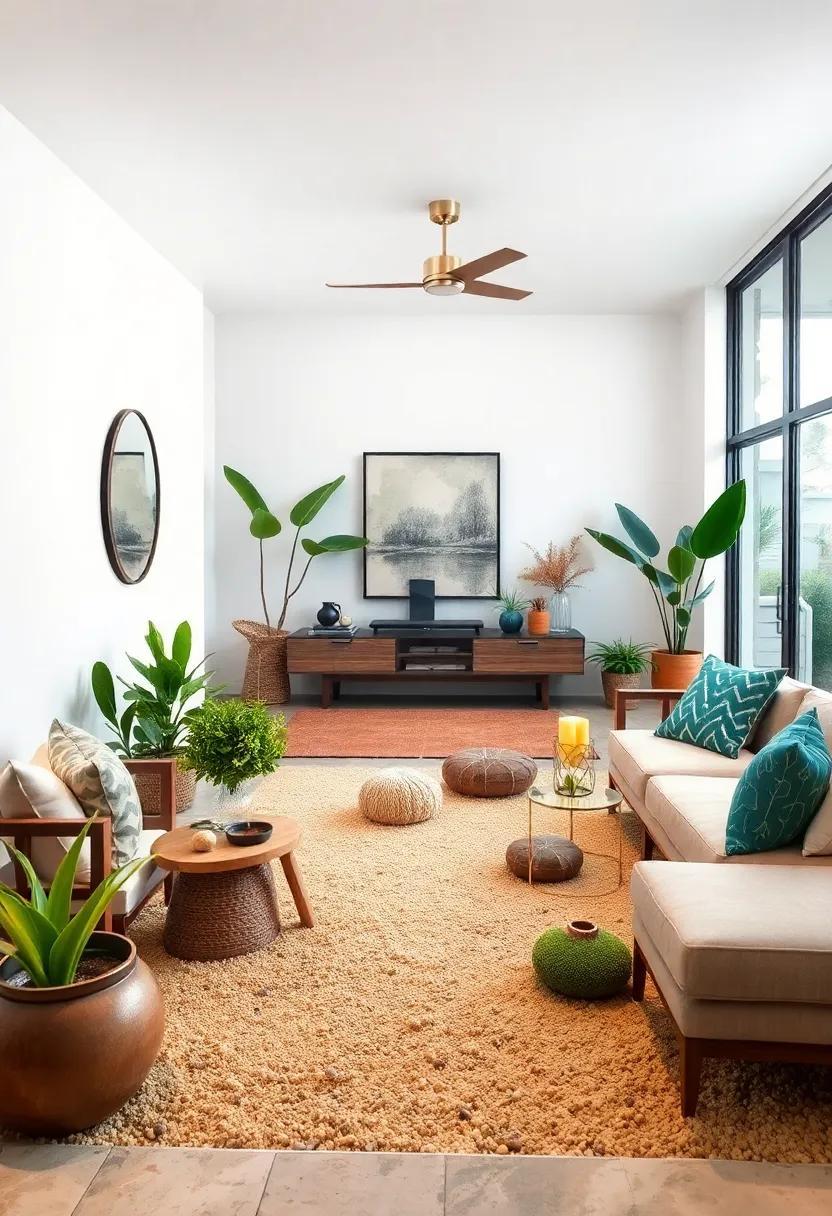
In a world that often feels hurried and cluttered, finding pockets of peace within our own homes has become a cherished pursuit. One subtle yet powerful way to cultivate calm is through the art of the front yard mini Zen sand garden-a delicate blend of nature and mindfulness right at your doorstep. More than just a decorative space, this miniature sanctuary offers a quiet retreat, inviting contemplation and serenity amid the rhythms of daily life. In this article, we explore the thoughtful design elements and practical steps to create your own front yard mini Zen sand garden, turning your outdoor space into a tranquil haven that soothes the senses and nurtures the spirit.
Choosing the Perfect Location in Your Front Yard to Cultivate a Serene Zen Sand Garden Atmosphere
When selecting the ideal spot for your miniature Zen sand garden, consider areas in your front yard that naturally evoke a sense of calm and mindfulness. Look for spaces with gentle sunlight filtering through nearby trees, where shadows dance softly on the ground throughout the day. This interplay of light and shade helps deepen the garden’s tranquil ambiance. Additionally, proximity to a quiet seating area encourages moments of reflection, allowing you to fully immerse yourself in the meditative experience. Avoid locations near loud driveways or constantly trafficked pathways that could disturb the serenity you seek to cultivate.
Practical considerations are just as crucial as aesthetics. The ground should be level and well-drained to maintain the crisp patterns raked into the sand without erosion or puddling from rain. If your yard has various soil types or slopes, this might influence your placement choice. Below is a simple guide to help you evaluate your potential garden site:
| Criteria | Ideal Spot Characteristics |
|---|---|
| Sunlight | Filtered or soft morning sun |
| Noise Level | Quiet, shielded from street sounds |
| Surface | Flat and well-draining soil or gravel bed |
| Visibility | Visible from front windows or patio seating |
- Avoid steep slopes to keep the sand level and patterns intact.
- Use natural boundaries like rocks or low shrubs to frame the garden gently.
- Consider the backdrop to create a harmonious visual balance with your home.
Selecting Natural Stones and Pebbles to Enhance the Minimalist Beauty of Your Mini Zen Sand Garden
When choosing stones and pebbles for your mini Zen sand garden, simplicity and mindfulness should guide your selection. Opt for natural stones with smooth, rounded edges and neutral hues like soft grays, muted whites, and gentle earth tones. These choices will create a peaceful balance without overwhelming the subtle sand patterns. Incorporate stones of varying sizes to add a natural rhythm, but keep the overall quantity minimal to maintain the garden’s contemplative essence.
To help you select the perfect stones, consider these key characteristics:
- Texture: Smooth surfaces enhance calmness, while rough textures can add contrast if used sparingly.
- Color Harmony: Choose colors that complement your home’s exterior and the natural environment.
- Size Variation: Mix a few larger feature stones with smaller pebbles to simulate natural water-worn landscapes.
| Stone Type | Color | Ideal Use |
|---|---|---|
| River Rock | Light Gray | Centerpiece stones or defining paths |
| Slate Pebbles | Dark Charcoal | Contrast elements near sand patterns |
| Quartz Pebbles | Soft White | Accents to brighten small areas |
Crafting Intricate Sand Patterns That Evoke Calm Waves and Gentle Ripples in a Compact Space
Mastering the art of small-scale sand pattern design hinges on the delicate balance between precision and fluidity. Begin by choosing a rake with fine tines to etch smooth, flowing lines that mimic the gentle movement of waves caressing a shoreline. The key is to layer patterns thoughtfully-start with broad, undulating curves that traverse the garden’s surface, then add subtle, concentric ripples around stones or miniature sculptures to create focal points of serene energy. This interplay between sweeping arcs and delicate circles forms a harmonious rhythm, inviting the eye to wander and the mind to settle.
Incorporating texture through varied sand depth enhances the visual dynamic without overcrowding the compact space. Consider these pattern elements to enrich the design:
- Soft wave formations: evoke oceanic calm and fluidity
- Delicate ripple clusters: suggest gentle disturbances in still water
- Isolated smooth patches: act as visual breathing spaces amidst intricate details
| Pattern Technique | Visual Effect | Recommended Rake Style |
|---|---|---|
| Wide sweeping arcs | Flowing wave movement | Broad-toothed |
| Graduated concentric circles | Gentle ripples | Fine-toothed |
| Empty smooth zones | Calm resting points | Flat edge |
Integrating Small Bamboo Fences and Privacy Screens to Define Boundaries With Zen Aesthetic Charm
Crafting borders that whisper tranquility rather than shout boundaries is essential in a mini Zen sand garden. Small bamboo fences, with their natural hues and delicate texture, act as perfect dividers that evoke calm and simplicity. Unlike traditional fences, they blend seamlessly with the organic elements, inviting a sense of serenity while gently guiding the eye across the landscape. By using varying heights and spacing, you can create a subtle rhythm that enhances the garden’s visual flow without overpowering the peaceful tableau of sand and stones.
Privacy screens made from bamboo or bamboo-inspired materials introduce an element of seclusion that is at once functional and aesthetically soothing. These screens not only shield the garden from outside distractions but also bring a textured backdrop that complements raked sand patterns and moss accents. Consider incorporating curved edges and natural finishes to maintain harmony with the Zen philosophy. Here’s a quick guide to selecting the ideal screen features for your mini garden:
- Height: 3-4 feet for intimate enclosure without feeling confined
- Material: Natural bamboo or eco-friendly composites with bamboo texture
- Color: Earthy tones that age gracefully into the surroundings
- Design: Slatted or woven, allowing light and gentle breezes
Balancing Greenery and Sand by Incorporating Moss or Succulent Accents for Visual Harmony
Achieving the perfect balance between the soft vibrancy of greenery and the stark simplicity of sand is essential for a visually harmonious zen garden. Introducing moss patches offers an inviting touch of lush, deep green that softens the sandy textures without overpowering them. Moss’s delicate, cushion-like presence adds a tranquil depth to the garden’s design, creating a calming contrast that encourages viewers to pause and appreciate the subtle beauty of nature. Its low-maintenance nature makes it an excellent choice for maintaining a fresh and organic feel throughout the year.
Succulents, on the other hand, bring structure and architectural elegance to the sandy canvas. Their diverse shapes and muted color palette complement the zen aesthetic by adding points of interest without disrupting the minimalist vibe. Consider grouping succulents in small clusters or along pathways to create a natural rhythm and flow. The following table demonstrates how different succulent types pair with moss to achieve a balanced zen garden centerpiece:
| Succulent Type | Color Palette | Moss Pairing | Visual Effect |
|---|---|---|---|
| Haworthia | Dark green with white stripes | Sheet Moss | Elegance with soft texture contrast |
| Echeveria | Blue-green to pale pink | Cushion Moss | Subtle color balance and rounded softness |
| Crassula | Bright green | Sphagnum Moss | Vibrant pop with natural earthiness |
- Contrast: Use moss to create soft patches against sharp succulent edges.
- Placement: Strategically place accents to lead the eye naturally through the garden.
- Texture Mix: Combine smooth sand ripples with varied plant surfaces for tactile interest.
Creating a Visual Contrast Using Dark Slate or River Rocks Against Light Sand for Depth and Texture
Introducing dark slate or smooth river rocks into your light sand Zen garden creates a stunning visual contrast that captivates the eye and invites contemplation. This interplay of textures not only adds depth but evokes a natural harmony reminiscent of mountain shadows resting over sun-kissed sands. By strategically placing these darker elements, you create focal points that break the uniformity of the light sand, enhancing the garden’s dimensionality and fostering a soothing balance between calmness and structure.
To maximize the effect, consider these design tips:
- Cluster the rocks: Grouping stones in odd numbers, like threes or fives, mimics nature’s organic patterns.
- Vary sizes and shapes: Mix rounded river rocks with flat slate pieces for textural variety.
- Trail pathways: Arrange darker stones to guide the eye along curated visual paths in the sandy canvas.
This approach not only enriches the tactile experience but fosters a serene environment where every glance reveals new layers of peace and presence.
Designing a Tranquil Water Feature like a Small Bamboo Fountain to Harmonize With the Zen Garden Theme
Incorporating a small bamboo fountain as a water feature brings a subtle yet impactful element of serenity to your front yard Zen sand garden. Bamboo, known for its natural aesthetic and gentle sound, perfectly complements the meditative atmosphere. To achieve harmony, select a fountain with soft, rhythmic water flow that mimics rainfall or a gentle stream, enhancing the sensory experience without overwhelming the space. Position the fountain near smooth river stones or alongside raked sand patterns to create a balanced visual and auditory focal point that encourages mindfulness.
When designing this feature, consider these essentials to maintain authenticity and tranquility:
- Material Selection: Use natural bamboo or bamboo-styled weather-resistant materials.
- Water Flow Control: Adjustable pumps help maintain a peaceful, calming sound.
- Placement: Situate the fountain where it interacts gently with the wind and sunlight, casting subtle shadows on the sand.
- Complementary Elements: Surround with small moss patches, smooth pebbles, or miniature ferns for added texture harmony.
| Element | Purpose | Benefit |
|---|---|---|
| Bamboo Fountain | Sound & Visual Focus | Encourages Meditation |
| Smooth Pebbles | Ground Softness | Enhances Textural Contrast |
| Raked Sand | Pattern Creation | Symbolizes Flow and Movement |
Choosing a Subtle Color Palette With Earthy Tones and Soft Greens to Promote Inner Peace and Relaxation
Embracing a color scheme rooted in earthy tones and soft greens sets a serene foundation for your mini Zen sand garden. These hues mimic the natural world, instantly grounding the space and inviting a sense of calm. Think of muted clay, warm taupe, and gentle moss shades interwoven with sage and olive greens. Together, they create a subtle yet rich palette that encourages mindfulness without overwhelming the senses. Incorporating these colors through materials such as smooth stones, wooden elements, and delicate plantings enhances the tactile experience, making your front yard a tranquil retreat.
Consider these elements to weave your color story effectively:
- Natural stone accents: Choose river rocks or slate in soft grays and browns to complement greenery.
- Plant selection: Opt for ferns, hostas, or succulents in varying soft green shades to add depth and life.
- Sand color: Light beige or pale tan sand mimics untouched earth, perfect for raking patterns and Zen motifs.
- Wood finishes: Weathered teak or cedar with a light stain keeps the look organic and warm.
| Element | Suggested Colors | Effect |
|---|---|---|
| Sand | Beige, Tan | Calming, Neutral Base |
| Stones | Gray, Brown | Grounding, Textural Contrast |
| Plants | Sage, Olive, Moss | Softness, Natural Freshness |
| Wood | Light Teak, Cedar | Warmth, Organic Feel |
Incorporating Delicate Miniature Lanterns or Pagodas to Add a Traditional Zen Garden Element
Delicate miniature lanterns or pagodas serve as timeless symbols of peace and spirituality, effortlessly enhancing the authentic atmosphere of your front yard mini zen sand garden. These intricate pieces anchor the space visually while inviting a sense of calm reflection. When positioning these elements, consider balance and scale-placing a small lantern beside a smooth stone or nestled near raked sand lines encourages an intimate, serene mood. The soft glow or muted presence of these traditional accents acts as a gentle focal point, casting subtle shadows that mimic the quiet dance of light found in larger, historical Zen gardens.
To highlight these traditional features effectively, think about pairing them thoughtfully with natural materials such as moss, pebbles, and driftwood. Additionally, try varying textures and heights by using:
- Weathered stone bases beneath lanterns for a grounded look
- Miniature stepping stones leading to pagodas, inviting a contemplative walk
- Soft moss cushions to contrast with the solid geometry of lanterns
| Element | Best Placement | Effect |
|---|---|---|
| Miniature Lantern | Near center or corners | Focus & subtle illumination |
| Pagoda | Against natural backdrops | Height & spiritual symbolism |
| Moss Cushion | Surrounding lanterns/pagodas | Softness & color contrast |
Strategically Placing Smooth Driftwood or Weathered Branches to Infuse Natural Elegance and Flow
Introducing elements of driftwood or weathered branches within your mini Zen sand garden instantly elevates its organic charm. These pieces, sculpted by nature’s hand, contribute subtle textures and a timeless aesthetic, evoking a sense of calm and continuity. By positioning them thoughtfully-either partially buried in the sand or resting gently upon the surface-you create visual anchors that guide the eye and enhance the garden’s natural flow.
To achieve a balanced composition, consider mixing different sizes and shapes that complement the sandy expanse. Incorporate these tips for placement:
- Contrast & Harmony: Use the smooth, worn wood to contrast the fine granular sand while maintaining a harmonious natural palette.
- Directional Flow: Arrange branches along gentle curves or lines in the sand to echo the raked patterns and deepen the sense of movement.
- Focal Points: Position a larger piece as a centerpiece or cluster smaller branches for a subtle vignette.
Using Curved Wooden Rakes or Tools to Shape Meaningful Zen Patterns in the Sand Surface
When crafting your mini Zen sand garden, curved wooden rakes become essential tools that bring the simple sand surface to life. Their soft, arching lines allow you to draw flowing, rhythmic patterns that evoke natural elements like ripples in water or gentle wind through grass. Unlike straight-edged rakes, these curved tools encourage a more organic approach, inviting you to embrace imperfection and fluidity. The tactile experience of gently guiding the rake across the sand adds a meditative dimension to your design process, deepening your connection to the garden’s tranquil essence.
Experiment with a variety of curved patterns to create visual harmony and movement. You can mix tighter spirals with broader flowing arcs, guiding the eye across the landscape in a soothing dance. Here are some simple yet effective designs to try with your curved rakes:
- Concentric waves: Circles expanding outward, mimicking water ripples
- Meandering rivers: Soft, winding lines that suggest gentle streams
- Overlapping arcs: Creating a layered effect reminiscent of rolling hills
| Pattern Style | Emotional Effect | Suggested Tool Stroke |
|---|---|---|
| Concentric Circles | Calm & Centered | Slow, even strokes from a central point |
| Flowing Arcs | Inviting & Soothing | Gentle curved sweeps across the surface |
| Overlapping Waves | Complex & Balanced | Layered, interlocking arcs with varied speed |
Establishing a Meditation Nook Adjacent to the Zen Garden for Moments of Quiet Reflection and Mindfulness
Nestling a small seating area adjacent to your Zen garden creates a sacred space for quiet reflection and mindfulness. This meditation nook invites you to pause amidst the gentle textures of sand and stone, enhancing your connection to nature and inner calm. Opt for simple, natural materials like bamboo chairs or a wooden bench, paired with soft cushions in earth tones to maintain harmony with the garden’s aesthetics. Surround the nook with low-growing plants or a small water feature to deepen the sensory experience and drown out urban noise.
Practical elements are essential for creating a comfortable and peaceful retreat. Consider adding subtle lighting such as solar lanterns or candles to encourage use during dawn or dusk. Incorporate a small shelf or table for meditation tools like incense, a singing bowl, or a journal that encourages mindfulness practices. Below is a simple guide to essentials that turn your meditation corner into a haven of serenity:
- Seating: Bamboo chair or wooden bench with cushions
- Ambience: Soft solar lights or candles
- Sound elements: Small water fountain or wind chimes
- Tools: Incense holder, singing bowl, meditation journal
Highlighting the Contrast Between Light and Shadow by Positioning Your Garden Near Natural Sunlight
Positioning your mini Zen sand garden adjacent to a spot where natural sunlight dances gracefully throughout the day can profoundly amplify its meditative ambiance. The interplay of light and shadow introduces a dynamic visual rhythm, encouraging quiet contemplation. As sunlight filters through trees or nearby structures, it casts soft patterns on the sand’s raked lines and smooth stones, creating a living artwork that transforms with the hours. Embrace areas where dappled sunlight shifts gently, highlighting textures and shapes without overwhelming the delicate balance of the space.
To harness this effect fully, consider these elements when planning your layout:
- Dynamic Illumination: Opt for locations where sunlight moves naturally, providing both vibrant highlights and welcoming shade.
- Contrast Enhancement: Arrange stones and plants to catch light at different angles, accentuating their forms and shadow play.
- Seasonal Change: Account for the sun’s seasonal arc, ensuring your garden’s peaceful energy persists year-round.
| Sunlight Element | Effect on Garden | Design Tip |
|---|---|---|
| Morning Sun | Soft, warm light awakening the space | Place delicate plants where they first meet sunlight |
| Midday Light | Bright contrast highlighting textures | Use stones here to create defined shadows |
| Late Afternoon | Golden hues casting long shadows | Position sand patterns to capture gentle fades |
Planting Tiny Japanese Maples or Bonsai Trees as Living Focal Points Within the Serene Sandscape
Embracing the delicate artistry of tiny Japanese maples or bonsai trees introduces a captivating vertical element into your miniature zen sand garden. These living focal points not only anchor the space but also evoke a profound sense of calm through their intricate branches and gentle, graceful shapes. Selecting a dwarf Japanese maple with its vibrant seasonal foliage or a meticulously pruned bonsai tree brings texture and life to the minimalist sandscape, creating a dynamic interplay between stillness and growth. When positioned thoughtfully, these trees can frame sightlines, guiding the eye across the garden’s serene expanse while honoring the philosophy of balance and simplicity.
To nurture these miniature marvels within your sand garden, consider the essential care factors that promote their longevity and aesthetic appeal:
- Sunlight: Provide bright, indirect light to simulate their natural environment without causing leaf scorch.
- Watering: Maintain consistent moisture, avoiding both drought and waterlogging, tailored to each species’ needs.
- Soil and drainage: Utilize well-draining soil in pots with drainage holes to prevent root rot.
- Pruning: Regular trimming encourages dense foliage and preserves the tree’s elegant silhouette.
Utilizing Natural Ground Cover Ideas That Compliment Your Sand Garden Without Overcrowding the Space
Choosing the right natural ground cover can enhance the calming aura of your sand garden without overpowering its minimalist design. Opt for low-growing plants such as mosses, creeping thyme, or Irish moss, which bring lush texture and a vibrant green contrast against the soft sand. These varieties thrive with minimal maintenance and add subtle movement, inviting a sense of peaceful rhythm. By selecting plants that stay close to the earth, you preserve the open, airy feel essential for a true Zen experience, while introducing a natural softness to the visual composition.
When incorporating ground covers, it’s important to maintain balance through careful spacing and selection. Consider these practical tips:
- Prioritize drought-tolerant and slow-spreading species to prevent overgrowth.
- Create natural borders with flat stones or bamboo edging to confine the greenery.
- Alternate patches of bare sand and green cover to encourage visual breathing room.
Below is a helpful guide summarizing the suitability of popular ground cover options for a mini Zen sand garden:
| Ground Cover | Growth Habit | Maintenance Level | Visual Impact |
|---|---|---|---|
| Moss | Compact, low | Low | Soft, velvety green |
| Creeping Thyme | Spreading, low | Medium | Small purple blooms, aromatic |
| Irish Moss | Dense, mat-forming | Low | Bright green, cushion-like |
Embedding Zen-Inspired Sculptures or Figurines for a Touch of Spiritual Symbolism and Artistic Flair
Incorporating Zen-inspired sculptures or figurines into your mini sand garden can transform the space from simply serene to profoundly symbolic. These pieces act as focal points, grounding the garden’s energy and inviting contemplation. Whether it’s a delicate Buddha statue, a gracefully posed crane, or minimalist stone lanterns, these elements embody tranquility and spiritual depth. Their subtle presence encourages mindfulness, creating a seamless dialogue between art and nature that enhances the meditative atmosphere of your front yard.
When selecting sculptures, consider the balance between size, texture, and placement. Too large, and they can overwhelm the delicate sand patterns; too small, and their impact may be lost. Arrange them thoughtfully to complement the raked lines and footprints in your sand, allowing each figurine to tell a part of your garden’s story. A simple guide to placement could look like this:
| Figurine Type | Ideal Placement | Symbolic Meaning |
|---|---|---|
| Buddha Statue | Center or Near Garden Entry | Peace, Enlightenment |
| Stone Lantern | Along Garden Edge | Guidance, Protection |
| Crane Figurine | Corner or Elevated Spot | Longevity, Grace |
This thoughtful integration of art with nature elevates your Zen garden beyond visual appeal, fostering a sacred space that reflects serenity, balance, and spiritual symbolism.
Designing the Mini Zen Sand Garden With a Circular or Oval Layout to Represent Wholeness and Balance
Embracing circular or oval shapes in your mini Zen sand garden fosters a profound sense of wholeness and harmony. These curvilinear forms naturally draw the eye inward, creating a focal point that symbolizes the continuous flow of energy, much like the cycle of life itself. When designing your garden, consider how the smooth, flowing lines encourage a meditative state, gently guiding your mind toward balance and serenity.
To effectively incorporate these shapes, focus on:
- Fluid Patterns: Use ripples and waves in the sand to mimic water’s gentle movement, enhancing the garden’s calming effect.
- Complementary Elements: Place rounded stones or Bonsai trees strategically within the space to echo the circular theme and ground the design.
- Symmetrical Arrangement: Balance the placement of elements to achieve visual equilibrium, symbolizing inner peace.
Combining Fine Sand Textures With Coarser Gravel to Create Visual Interest and Tactile Variation
Balancing different textures in your mini Zen garden is key to capturing both visual allure and tactile intrigue. By combining fine sand with coarse gravel, you introduce layers of depth that invite viewers to explore not just with their eyes but with their hands. Fine sand offers a smooth, calming canvas that’s perfect for raked patterns-evoking the fluidity of water-while coarse gravel grounds the space, adding structure and contrast. This interplay transforms the garden into a multidimensional retreat, where every grain tells a subtle story of balance and harmony.
To create a harmonious blend, consider strategically layering gravel and sand in distinct zones or patterns that complement each other. Experimenting with placement and scale can enhance the dynamism of your design. Here’s an example of how you can mix textures effectively:
| Element | Visual Role | Tactile Experience |
|---|---|---|
| Fine Sand | Creates smooth, flowing lines | Soft, powdery to the touch |
| Coarse Gravel | Defines borders and adds contrast | Rough, grounding texture |
| Mixed Areas | Integrates elements for cohesion | Varied, stimulating senses |
- Use gravel to frame sand beds, creating natural boundaries that emphasize the quiet elegance of the sand.
- Layer fine sand over shallow gravel, producing a subtle texture beneath smooth surfaces for gentle surprises beneath your feet.
- Incorporate raking patterns, guided by the transition between sand and gravel to enhance movement and flow.
Arranging Zen Garden Elements to Encourage a Sense of Flow and Movement Throughout the Design
To achieve a harmonious flow and natural movement within your mini Zen sand garden, it’s essential to thoughtfully place each element with intention. Begin by visualizing the garden as a living narrative, where the sand, stones, and plants tell a story of gentle progression. Utilize sweeping patterns in the sand-curved or spiral raking strokes-that guide the eye and invite a rhythmic journey through the space. Group stones asymmetrically but balanced, echoing natural rock formations, so your garden doesn’t feel static but dynamic. Incorporating subtle elevation changes with small mounds or dips can enhance this sense of natural ebb and flow, embodying the principles of yin and yang in motion.
Consider the following tips to refine your garden’s visual movement and tranquility:
- Stagger stone sizes: Place larger stones as focal points and smaller ones to soften transition zones.
- Alternate textures: Mix smooth river rocks with rough-textured sand or moss patches for tactile contrast.
- Use paths or dry creek beds: These serve as natural leading lines, encouraging the eye to wander fluidly.
- Plant placement: Miniature bonsai or moss tufts should be arranged to enhance flow without overcrowding.
| Element | Design Tip |
|---|---|
| Sand Patterns | Use sweeping, curved lines instead of harsh angles |
| Stone Placement | Arrange stones in triads for natural balance |
| Plant Touches | Place low-growing moss near edges for softness |
| Elevation Changes | Create subtle hills to mimic nature’s flow |
The Way Forward
In the delicate balance of stones, sand, and simplicity, a front yard mini Zen sand garden transforms ordinary space into a sanctuary of calm. By thoughtfully designing this tranquil retreat, you invite mindfulness and serenity into your daily routine, offering a gentle pause amidst life’s bustle. Whether meticulously raked or quietly observed, your little patch of Zen becomes more than just a garden-it becomes a personal haven where peace takes root and stillness blooms.

